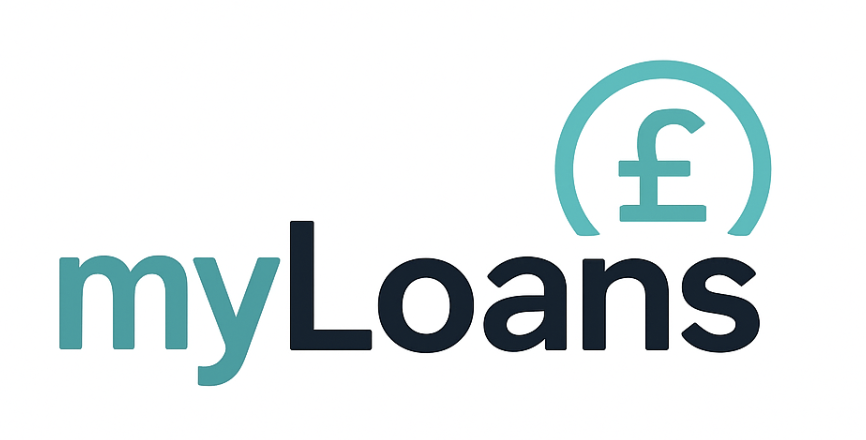Family Loans in the UK: A Complete Guide for 2025
Table of Contents
Introduction
Money within families is almost never just about pounds and pence. It’s bound up with emotions, expectations, and values. A financial gesture, whether it’s a lump sum to help with a house deposit, a short-term loan to cover bills, or even a casual bank transfer — can speak volumes about trust, love, sacrifice, or in some cases, hidden resentment.
In the UK, this dynamic is especially visible. Family lending is so common that the “Bank of Mum and Dad” consistently ranks among the nation’s top sources of funding for first-time buyers, rivalling traditional lenders. In fact, family members often act as silent financiers behind major life milestones: buying a home, starting a business, or weathering an unexpected crisis.
Yet, beneath the goodwill, the risks are real. Informal arrangements can create misunderstandings or even fracture relationships. A parent might expect repayment while an adult child interprets the transfer as a gift. Later, during stressful life events such as divorce, death, or financial hardship, these differing assumptions can spill over into disputes. Beyond family tension, poorly structured loans can have unintended consequences:
-
Legal risks — disputes over whether money was a gift or loan can end up in court.
-
Financial risks — loans may reduce benefit entitlement or affect mortgage applications.
-
Tax risks — HMRC may scrutinise undocumented loans during probate or inheritance tax assessments.
This guide brings together the financial, legal, and emotional dimensions of family loans in the UK as of 2025. The aim is to help you support loved ones while protecting everyone involved — making generosity sustainable, fair, and legally sound.
What is a Family Loan?
A family loan is money lent between relatives, typically without the strict rules of a bank or high street lender. These loans are often informal, flexible, and motivated by support rather than profit. For example:
-
Parents lending to children to help with university tuition or first-home deposits.
-
Grandparents stepping in with funds for weddings, house deposits, or childcare costs.
-
Siblings pooling resources to pay off debt or manage unexpected expenses.
Unlike commercial lenders, family loans usually come with:
-
Flexible repayment terms — often agreed verbally, such as “pay me back when you can.”
-
Low or no interest rates — relatives may not charge interest at all.
-
Trust-based agreements — relying on goodwill rather than legally binding contracts.
The Risk of Informality
While these arrangements feel personal and supportive, HMRC, banks, and courts view money transfers very differently. Without written evidence, what one person considers a loan might later be treated as:
-
A gift (with inheritance tax implications).
-
Taxable income in some scenarios.
-
A disputed debt if a family disagreement arises.
This is why properly documenting a family loan is vital — to avoid misinterpretation, protect relationships, and satisfy legal or tax requirements.
Family Loans vs Gifts
One of the most common sources of conflict is whether the money was a loan or a gift. The distinction is critical:
-
Loans:
-
Require repayment.
-
Evidence should exist (loan agreement, repayment schedule, bank transfers).
-
May include interest, though often at 0% or low rates.
-
-
Gifts:
-
Are unconditional, with no expectation of repayment.
-
Large gifts can affect inheritance tax (IHT) if the giver dies within seven years.
-
May reduce benefit entitlement for the recipient if not declared properly.
-
Why the Difference Matters
Many family disputes — especially during divorce proceedings or probate (the administration of a will) — arise because the nature of the transaction wasn’t clear at the start. For example, an adult child may see a deposit from parents as a gift, while parents see it as a repayable loan. Courts often side with the documented version, meaning clarity upfront is the safest approach.
Why Consider a Family Loan?
Family loans exist for a range of reasons, often driven by the desire to help younger generations in a tough financial climate.
1. Getting on the Property Ladder
In 2023, the average UK first-time buyer deposit was £53,000. For many, parental or grandparental loans make the difference between renting indefinitely and owning.
2. Education & Training
With university tuition fees capped at £9,250 per year, plus living costs, parents sometimes prefer to lend directly rather than see children accumulate student debt.
3. Debt Consolidation
Family loans can help loved ones escape high-interest credit card or payday loan traps.
4. Business Ventures
Start-ups often rely on “friends and family” funding. Loans from relatives can provide seed capital when banks refuse.
5. Flexibility & Trust
Unlike banks, families can tailor terms around life circumstances — payment holidays, no penalties, or reduced instalments during hard times.
But flexibility cuts both ways. The absence of structure is precisely what later leads to tension and legal ambiguity.
Why Consider a Family Loan?
Family loans exist for a wide range of reasons, often driven by the desire to support younger generations in an increasingly challenging financial climate. Rising house prices, high interest rates, and the cost-of-living crisis mean that for many families, lending within the household has become a practical solution.
Here are some of the most common scenarios:
1. Getting on the Property Ladder
The UK housing market remains one of the toughest hurdles for young adults. In 2023, the average first-time buyer deposit was around £53,000 — a figure that continues to rise in 2025.
Without the Bank of Mum and Dad, many would struggle to save enough while also paying rent and living expenses. A family loan can be the deciding factor between renting indefinitely and owning a home.
2. Education & Training
University tuition fees in England are capped at £9,250 per year, but when you add accommodation, food, and travel, the total cost is significantly higher. Parents and grandparents may prefer to lend money directly to cover these expenses rather than see children take on long-term student loans.
Loans can also extend beyond university — vocational training, apprenticeships, or postgraduate study are all increasingly supported by family lending.
3. Debt Consolidation
High-interest debt — from credit cards, overdrafts, or payday loans — can spiral quickly. A family loan for debt consolidation allows loved ones to repay expensive borrowing and replace it with an interest-free or low-interest family arrangement.
This can save thousands in interest charges and help someone get back on stable financial footing, though it requires careful management to avoid resentment.
4. Business Ventures
Start-ups often begin with “friends and family” funding. When banks or investors are reluctant, a family loan can provide essential seed capital for a small business or side hustle.
While this can be an exciting opportunity, it also carries risk. If the business fails, repayment may become difficult and family relationships can suffer. Clear contracts and realistic expectations are crucial.
5. Flexibility & Trust
Unlike banks or commercial lenders, families can offer flexible terms:
-
Payment holidays during financial difficulty.
-
No penalties for missed payments.
-
Reduced instalments if circumstances change.
This flexibility can be a lifeline — but it’s also what creates legal ambiguity later. Without proper documentation, disagreements can arise about repayment expectations, timing, or whether the loan was ever meant to be repaid at all.
Balancing Support with Structure
The main attraction of family loans is their human element — trust, empathy, and the willingness to help. But this very flexibility is also the biggest danger. Without clear documentation, what begins as a gesture of love can turn into a source of tension, legal disputes, or unexpected tax consequences.
Tax Implications in the UK
A family loan might feel like a private arrangement, but HMRC doesn’t see it that way. Money lent (or gifted) between relatives can affect inheritance tax, income tax, and probate proceedings. Failing to structure loans correctly risks unexpected bills, disputes during estate administration, or even HMRC challenges years later.
Here are the key areas to be aware of in 2025:
Inheritance Tax (IHT) Considerations
Inheritance Tax applies at 40% on estates above the nil-rate band (£325,000, or £500,000 if passing a home to direct descendants).
How family loans interact with IHT:
-
Outstanding Loans at Death: If a parent dies while a loan remains unpaid, it is treated as an asset of the estate. The child may need to repay it to the estate before distribution.
-
Written-Off Loans: If the lender forgives the loan, it is treated as a gift. If above the £3,000 annual exemption, the 7-year rule applies.
-
Deemed Gifts: HMRC may challenge poorly documented “loans” as disguised gifts, especially if no repayments were made.
Tip: Keep written evidence (loan contract, repayment records) to prove intent.
Interest on Family Loans
-
If interest is charged: The lender must declare it on their Self Assessment tax return as income.
-
If interest-free: No tax liability, but ensure HMRC won’t mistake it for disguised employment income (rare in family settings).
-
If below market rate: Unlike in some countries, the UK does not impute interest on below-market family loans.
Example:
A father charges his daughter 2% annual interest on a £30,000 loan. That £600 per year is taxable income for him.
Child Benefit & Means-Tested Benefits
Loans rarely affect Child Benefit directly. But they can impact means-tested benefits like Universal Credit, Housing Benefit, or Pension Credit.
-
Savings Thresholds: If a lump-sum repayment pushes someone’s savings above £6,000 (or £16,000), benefit entitlement reduces or stops.
-
Loan Forgiveness: Writing off a loan may be treated as deprivation of assets if done to increase benefit entitlement. Local authorities can still treat the money as available.
Legal Considerations & Documentation
When it comes to family loans in the UK, both intent and evidence carry weight. Families often rely on trust, but in the eyes of the law, verbal agreements are difficult to enforce. If a dispute arises — whether during divorce, probate, or financial hardship — courts will look at the evidence to decide whether a transaction was a genuine loan or an outright gift.
Why Legal Documentation Matters
-
Proof of Intent – A written loan agreement demonstrates that both parties intended repayment, reducing the risk of HMRC treating it as a gift or inheritance.
-
Clarity in Disputes – If one party later claims “it was a gift,” documentation helps courts or executors settle the issue fairly.
-
Tax Protection – Proper paperwork helps avoid unexpected inheritance tax or income tax liabilities.
-
Mortgage & Lender Compliance – If the loan is used for a property purchase, lenders often require a declaration of the loan (or insist it be reclassified as a gift).
Essential Elements of a Family Loan Agreement
A family loan agreement UK doesn’t need to be complex, but it should include:
-
Names of the parties (lender and borrower).
-
Loan amount (clearly stated).
-
Repayment terms (schedule, frequency, and method of repayment).
-
Interest (if any) – even if it’s 0%, state it clearly.
-
Default clauses – what happens if repayments stop.
-
Security (if applicable) – e.g., a charge over property.
-
Signatures and dates from both parties.
Enforceability in Court
-
A signed loan agreement is legally binding and can be enforced like any other debt contract.
-
Without documentation, courts may rely on circumstantial evidence — bank transfers, emails, or witness statements — which often leads to uncertainty.
-
In divorce cases, the absence of a loan agreement may result in the money being treated as a gift, excluded from repayment claims.
Common Pitfalls to Avoid
-
Relying on verbal agreements – memory fades, and intent gets reinterpreted over time.
-
Mixing loans and gifts – partial repayments with no clarity can confuse matters.
-
No record of payments – always keep bank transfers or written receipts.
✅ Key Takeaway: A simple, written family loan contract protects everyone. It doesn’t remove the trust element — it strengthens it by setting clear expectations and preventing future disputes.
Alternatives to Family Loans
Sometimes a family loan isn’t the best route. Alternatives include:
-
Outright gifts (with IHT implications).
-
Equity release (for older parents unlocking home value).
-
Guarantor mortgages (parents guarantee repayments instead of lending directly).
-
Joint ownership (parent and child buy property together).
-
Credit unions or peer-to-peer lenders (for smaller sums with structured repayment).
Common Disputes & How to Avoid Them
-
Gift vs Loan: Children insist it was a gift; parents’ estate insists repayment is owed.
-
Unfair treatment: One sibling helped more than others, causing resentment.
-
Divorce: Spouses argue about whether family loans count as marital debt.
-
Repayment disputes: Informal terms lead to disagreement on timing and amount.
Prevention Strategies:
-
Always document loans.
-
Treat siblings equally, or explain differences clearly in wills.
-
Update agreements if circumstances change.
-
Consider independent witnesses or solicitors.
Case Studies & Examples
-
House Deposit Loan: Parents lend £50,000. No repayments made. Father dies. HMRC treats it as part of estate. Siblings demand repayment from borrower child.
-
Business Failure: Uncle lends £25,000 to nephew’s start-up. No agreement. Business fails. Family feud erupts over whether repayment is expected.
-
Credit Union vs Family Loan: A single parent weighing whether to use a credit union child benefit loan (with interest) or borrow from her mother interest-free. Each choice affects independence, tax, and benefits differently.
Practical Steps: Creating a Family Loan Agreement
-
Discuss openly. Align on expectations before money changes hands.
-
Draft a written agreement. Templates are available online, but solicitor input is better for large sums.
-
Include repayment details. Amounts, dates, and method (bank transfer preferable for evidence).
-
Decide on interest. If interest is charged, the lender must declare it to HMRC.
-
Sign and witness. Ideally with independent witnesses.
-
Keep records. Store documents safely and track repayments.
Best Practices for Family Loans in the UK
-
Document everything. Even small loans should have written evidence.
-
Plan for death or incapacity. Wills and powers of attorney should reflect outstanding loans.
-
Be realistic. Don’t lend more than you can afford to lose.
-
Seek advice. Tax, benefits, and estate planning can be complex.
-
Prioritise relationships. Money should support, not divide, families.
Conclusion
Family loans are powerful tools — they can open doors to education, housing, or financial stability. But they also carry risks that formal lending avoids.
Handled with planning, transparency, and documentation, family loans can strengthen families. Left vague, they can fracture them.
In the UK’s complex tax and benefits system, clarity isn’t just good sense — it’s protection. Whether you’re lending or borrowing, approach family loans with the seriousness of any financial contract. Your future self, and your family, will thank you.
Alternatives to Payday Loans | Safer Borrowing Options
Payday loans are often marketed as a quick fix for cash emergencies, but they are not the only option available. Whether you’re facing an unexpected bill, car repair, or temporary cash shortfall, there are several alternatives to payday loans that may offer lower...
Payday Loans with Bad Credit | Direct Lender Options
If you’ve been refused credit elsewhere and are wondering whether you can still get a payday loan with bad credit, you’re not alone. Thousands of people in the UK search every month for options like “payday loans with bad credit” or “direct lender payday loans”. While...
Personal Loan Debt Consolidation UK – Is It Right for You?
Juggling multiple credit cards, overdrafts, or loans can be stressful and expensive. A debt consolidation loan allows you to combine everything into a single monthly repayment, often at a lower interest rate. In 2025, UK lenders from high street banks to online...
Emergency Loans UK – How to Borrow Fast in 2025
When an urgent expense hits — like car repairs, medical bills, or a broken boiler — quick access to funds can be essential. In 2025, emergency loans in the UK provide a way to borrow fast, with some lenders offering same-day decisions and payouts. This guide explains...
Top 10 Personal Loan Providers UK 2025 – Rates, Features & Eligibility
The UK personal loan market in 2025 offers more choice than ever, with banks, supermarkets, online lenders, and credit unions all competing for borrowers. The best deal for you depends on your credit score, loan size, and repayment term — but comparing providers side...
Best Debt Consolidation Loans UK 2025 | Top Options
Managing multiple debts can feel overwhelming, especially with credit cards, overdrafts, and personal loans all charging different interest rates. A debt consolidation loan can simplify your finances by rolling everything into one fixed monthly repayment — often at a...
Best Bad Credit Loans UK 2025 – Top Lenders Compared
Having a poor credit score, CCJs, or past defaults doesn’t mean borrowing is out of reach. In 2025, several UK lenders specialise in products designed for people with bad credit — offering smaller loans, flexible repayment terms, and eligibility checks that won’t harm...
Home Repair Loans UK – How to Cover Unexpected Costs in 2025
A leaking roof, broken boiler, or urgent plumbing issue can quickly turn into an expensive problem — often when savings aren’t available. In 2025, home repair loans in the UK provide a way to spread the cost of essential fixes into manageable monthly repayments. This...
Green Energy Loans UK – How to Finance Eco-Friendly Home Improvements in 2025
Eco-friendly upgrades such as solar panels, insulation, heat pumps, and EV chargers can cut energy bills and boost property value — but they require a significant upfront investment. In 2025, green energy loans in the UK provide a way to spread the cost of sustainable...
Moving House Loans UK – How to Cover Relocation Costs in 2025
From deposits and removal vans to solicitor fees and new furniture, moving house in the UK can quickly add up to thousands of pounds. Not everyone has savings set aside to cover these costs upfront. In 2025, moving house loans in the UK provide a way to spread...
Education Loans UK – How to Fund Studies and Professional Courses in 2025
Not all education in the UK is covered by government student finance. Postgraduate degrees, professional qualifications, and private training often require self-funding — with tuition fees and course costs running into thousands of pounds. In 2025, education loans in...
Holiday Loans UK – How to Spread the Cost of Travel in 2025
Holidays can be some of the most rewarding experiences of the year, but they often come with a price tag that’s hard to cover upfront. From flights and hotels to all-inclusive packages and once-in-a-lifetime trips, the costs can add up quickly. In 2025, holiday loans...
Best Personal Loans UK 2025 – Top Lenders Compared
The UK personal loan market in 2025 is more competitive than ever, with high street banks, supermarkets, online lenders, and credit unions all offering products to suit different needs. Choosing the right provider can save you hundreds in interest and ensure...
Medical Loans UK – How to Finance Healthcare Costs in 2025
While the NHS covers most essential treatment, waiting lists, private care, and specialist procedures mean many people face out-of-pocket medical expenses. From dental work and fertility treatment to cosmetic surgery and urgent private healthcare, costs can run into...
Car Loans UK – Personal Loan vs Hire Purchase vs PCP in 2025
Buying a car in 2025 usually means more than just choosing the right vehicle — it also means deciding how to pay for it. In the UK, the three main options are a personal loan, hire purchase (HP), or personal contract purchase (PCP). Each has its own advantages,...


















